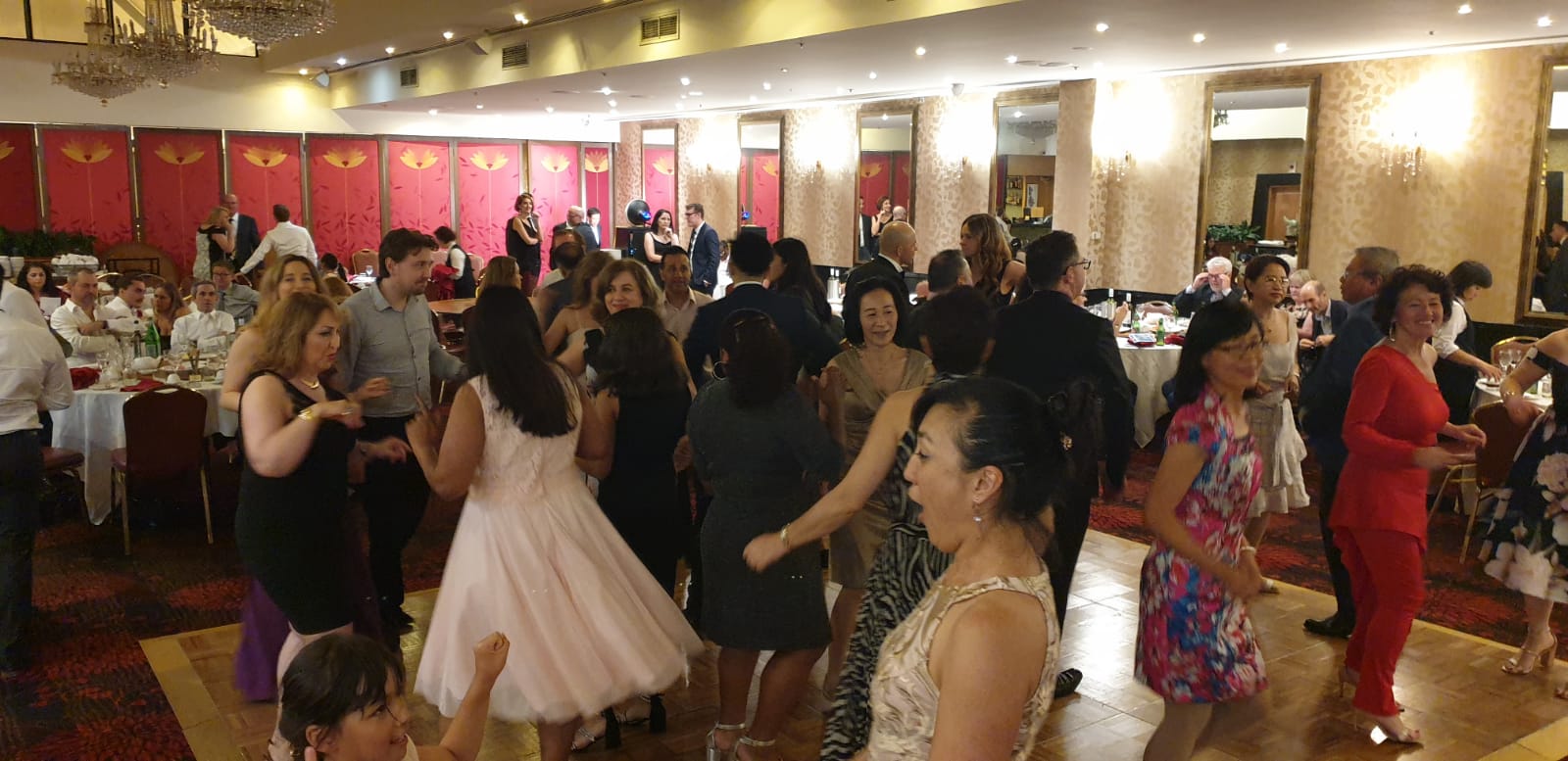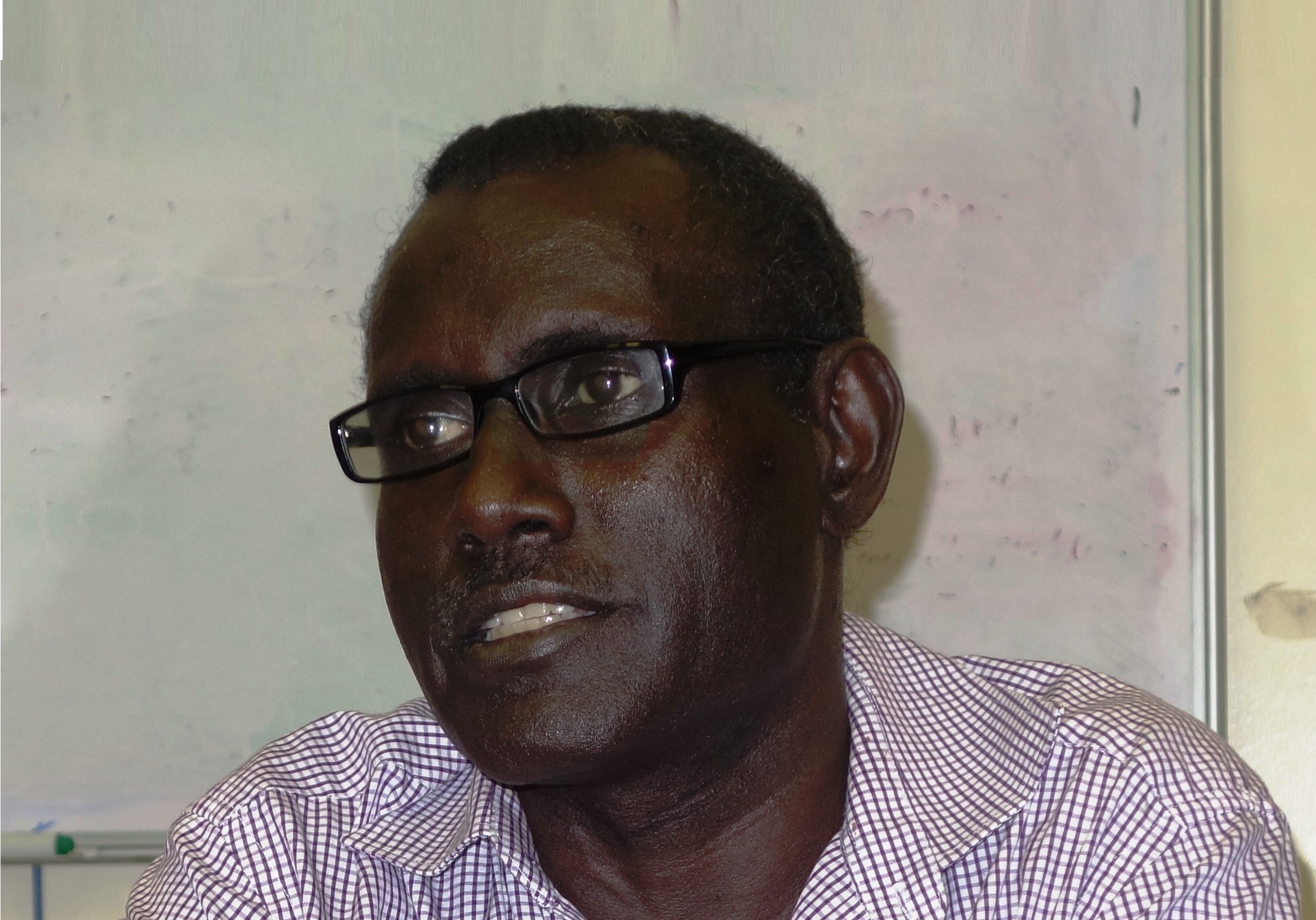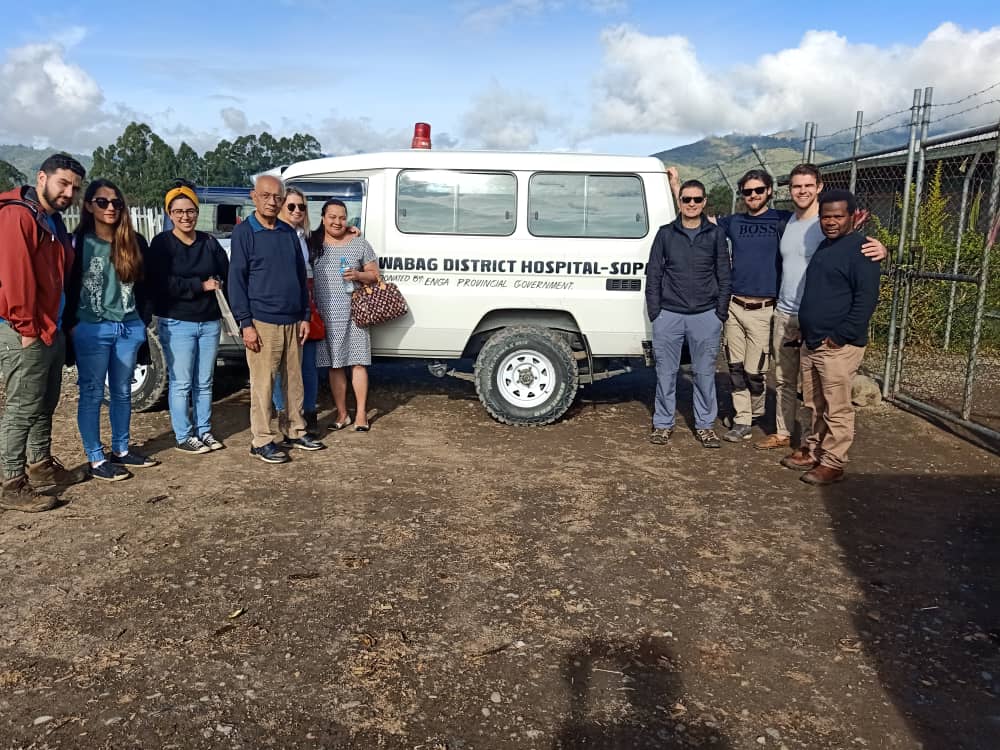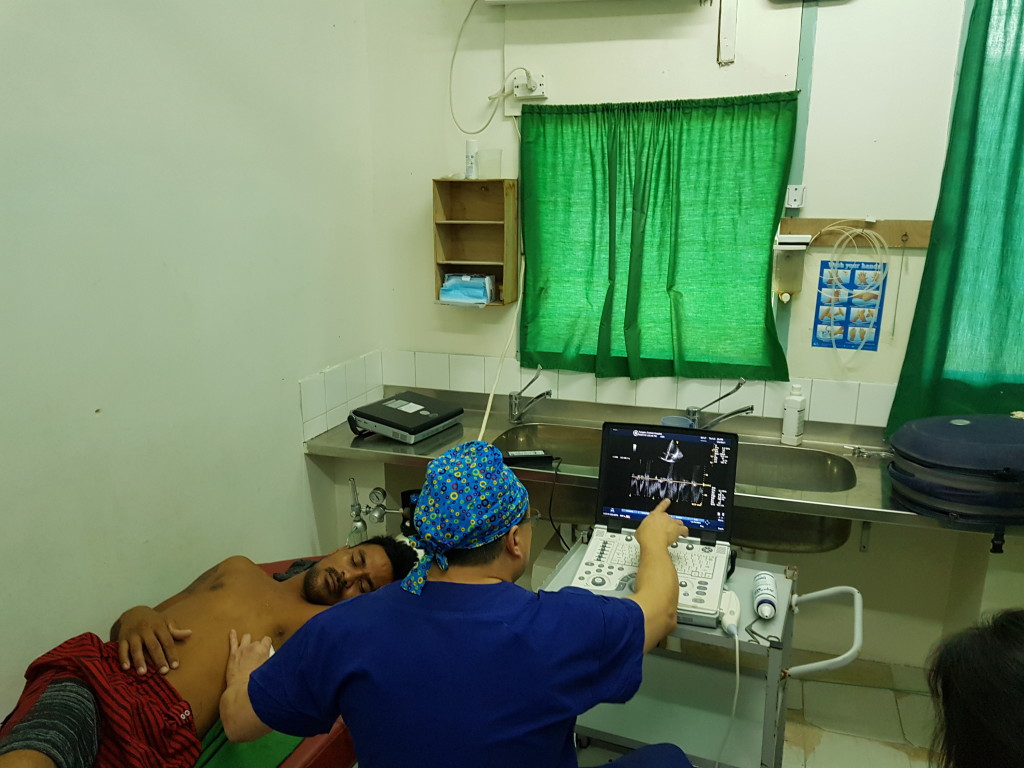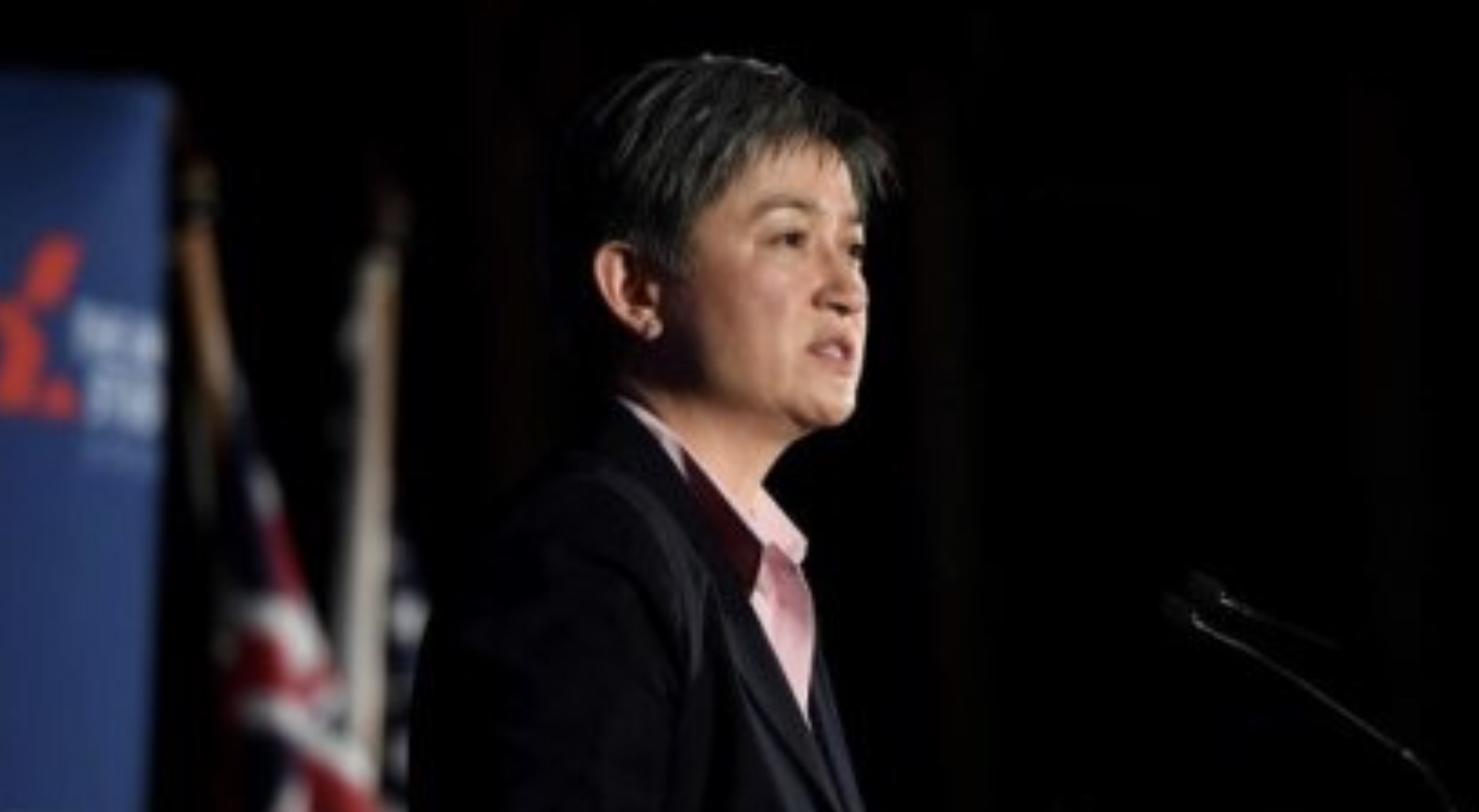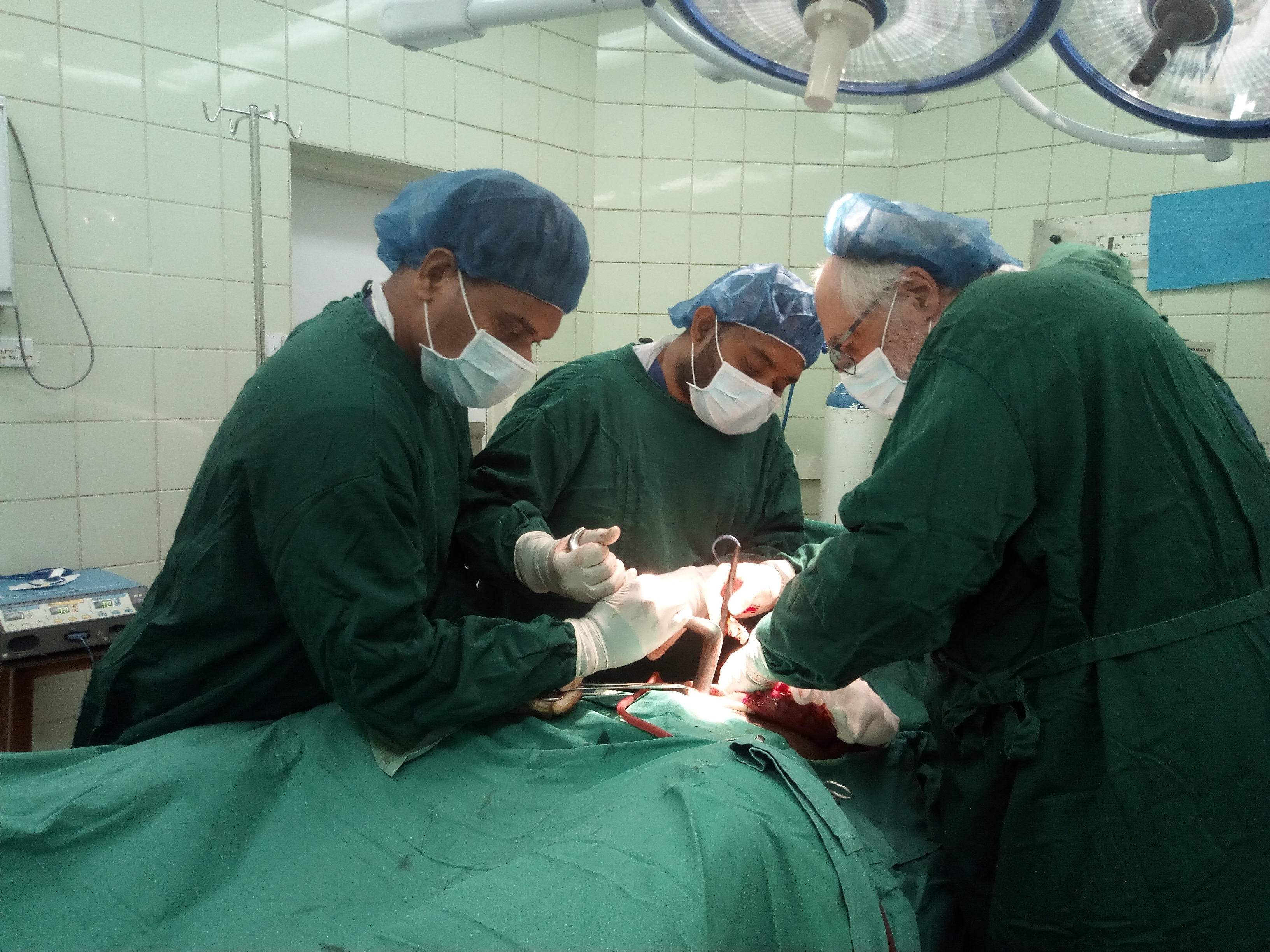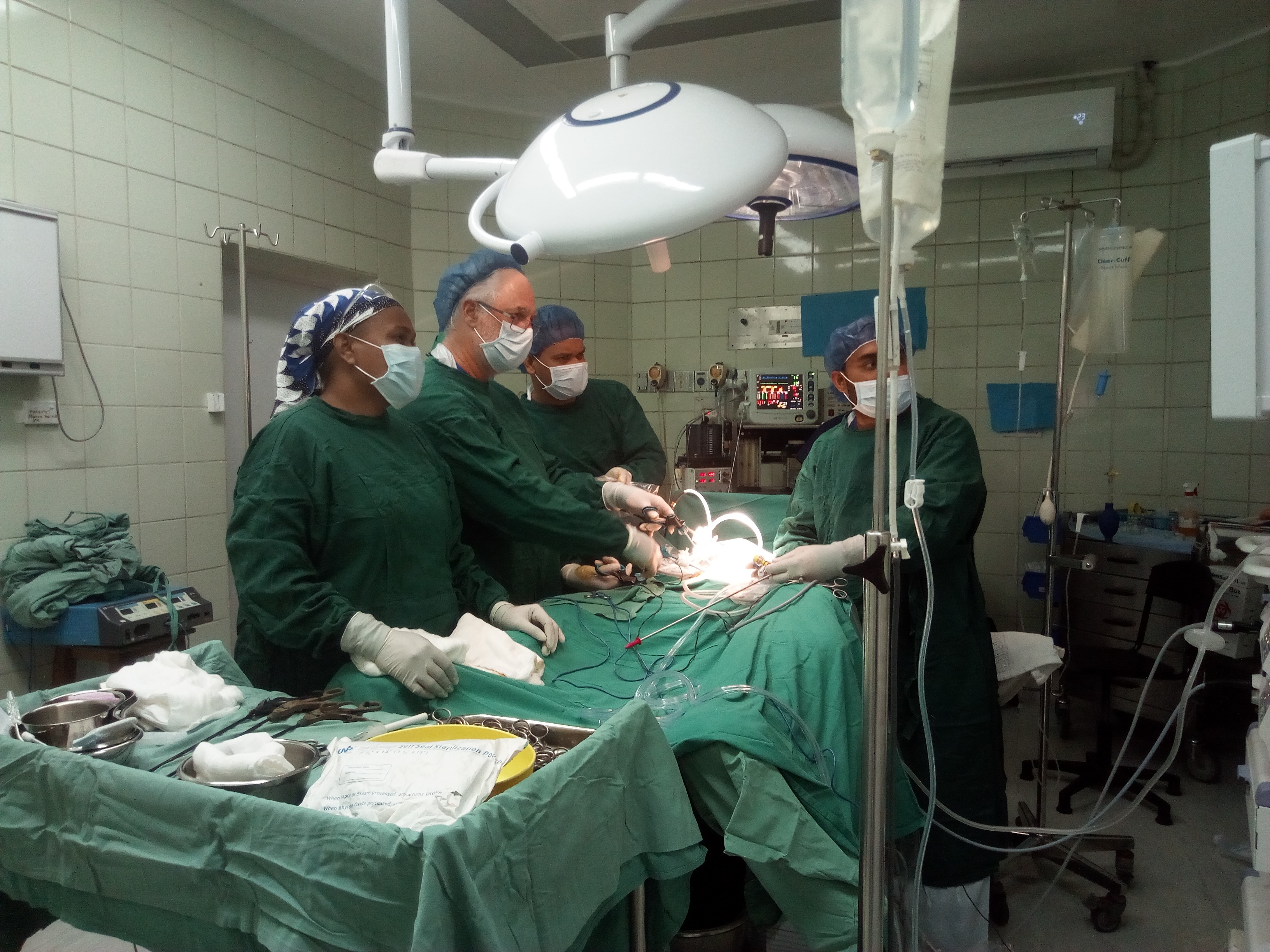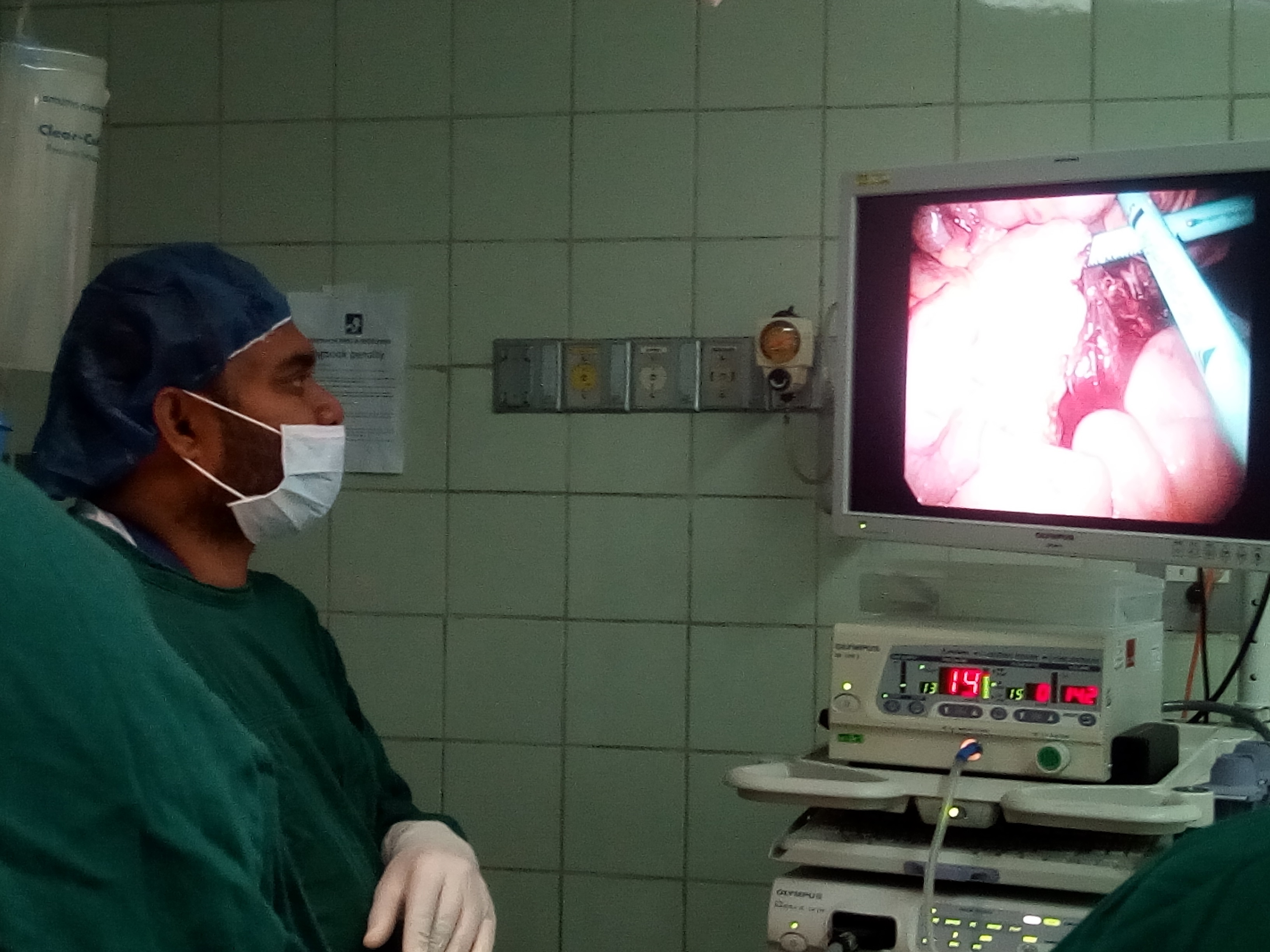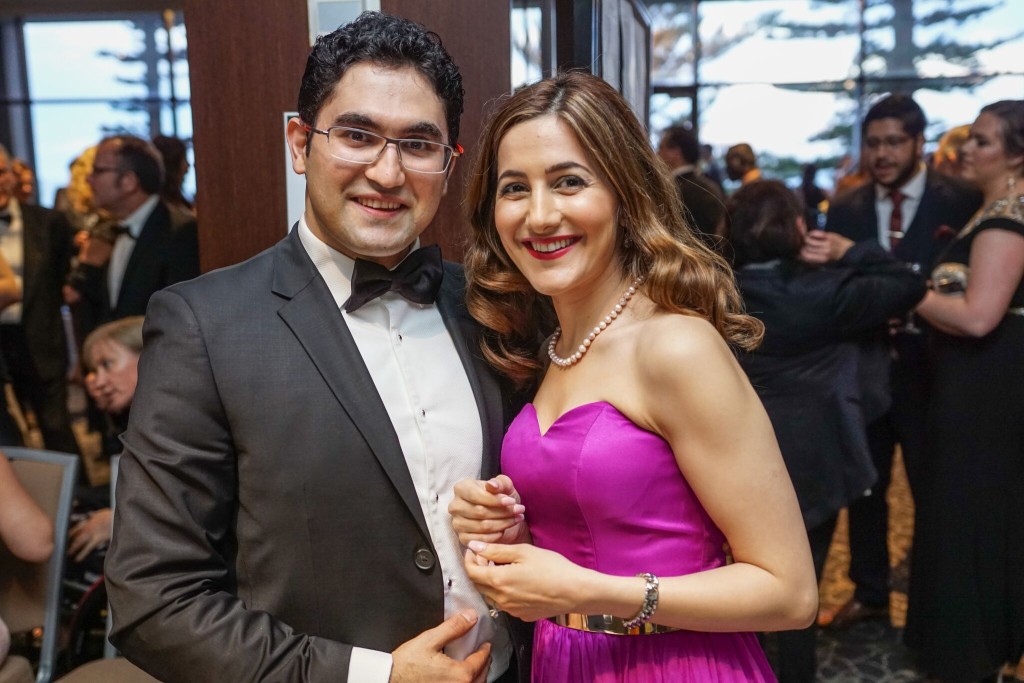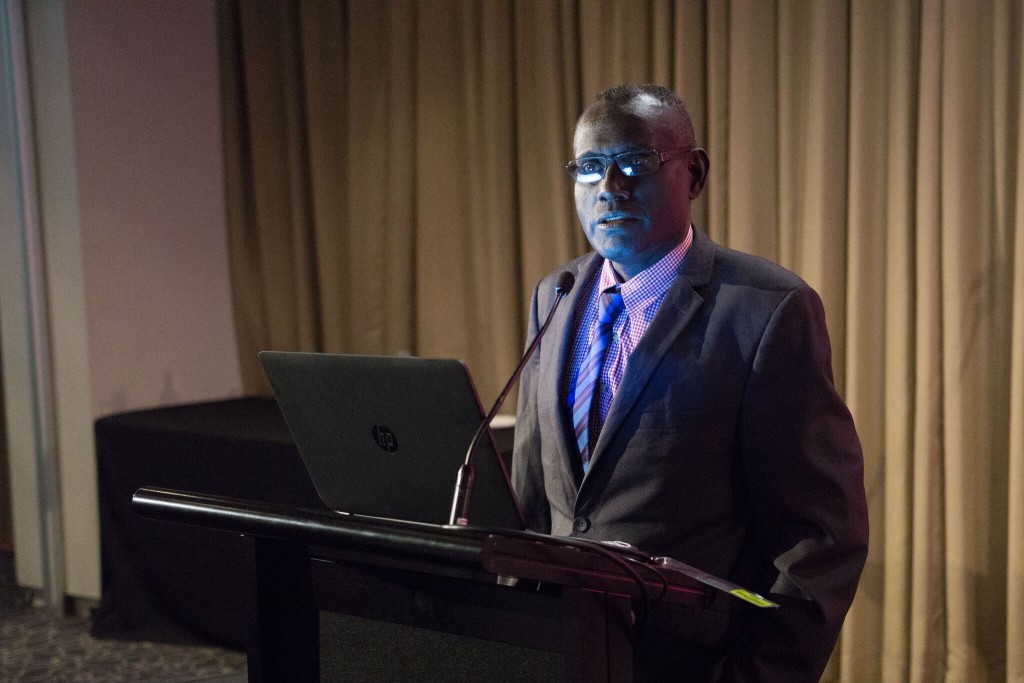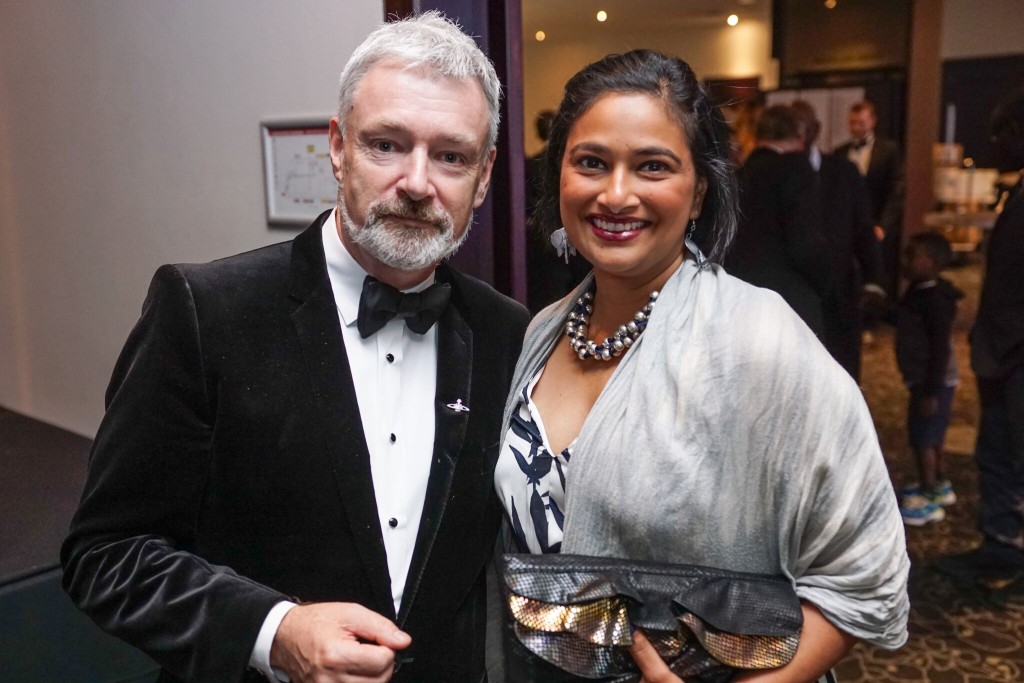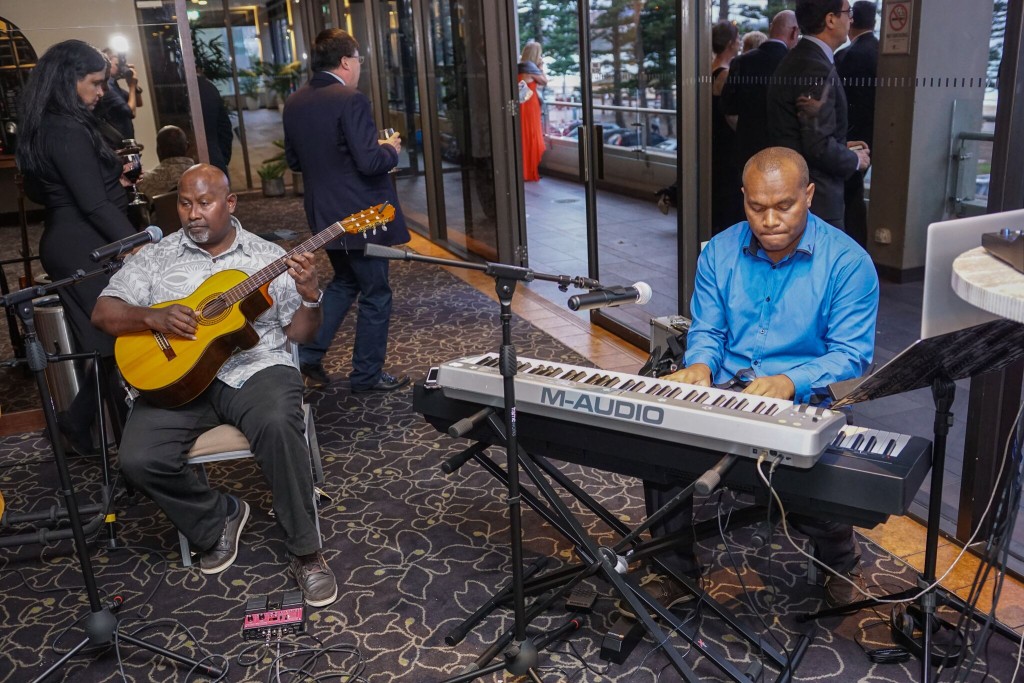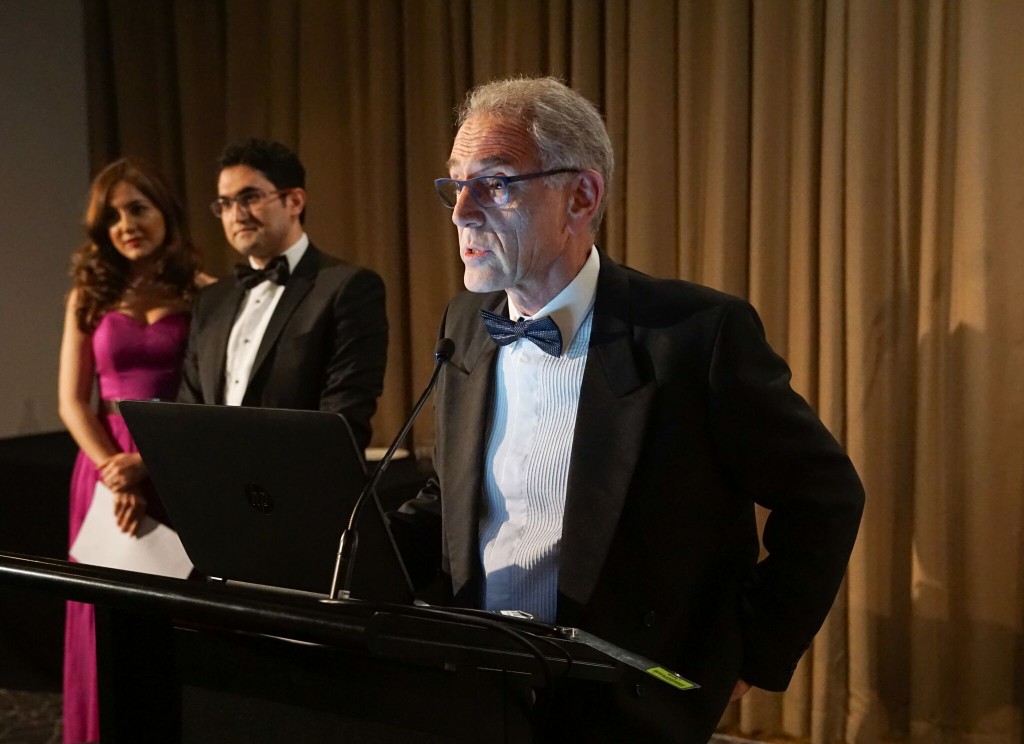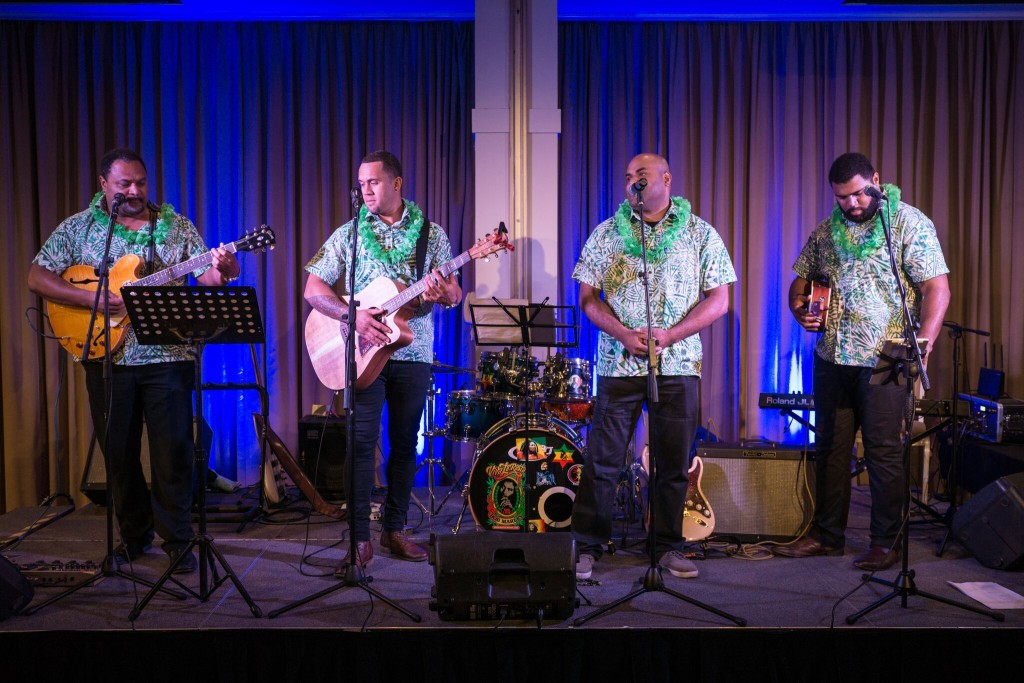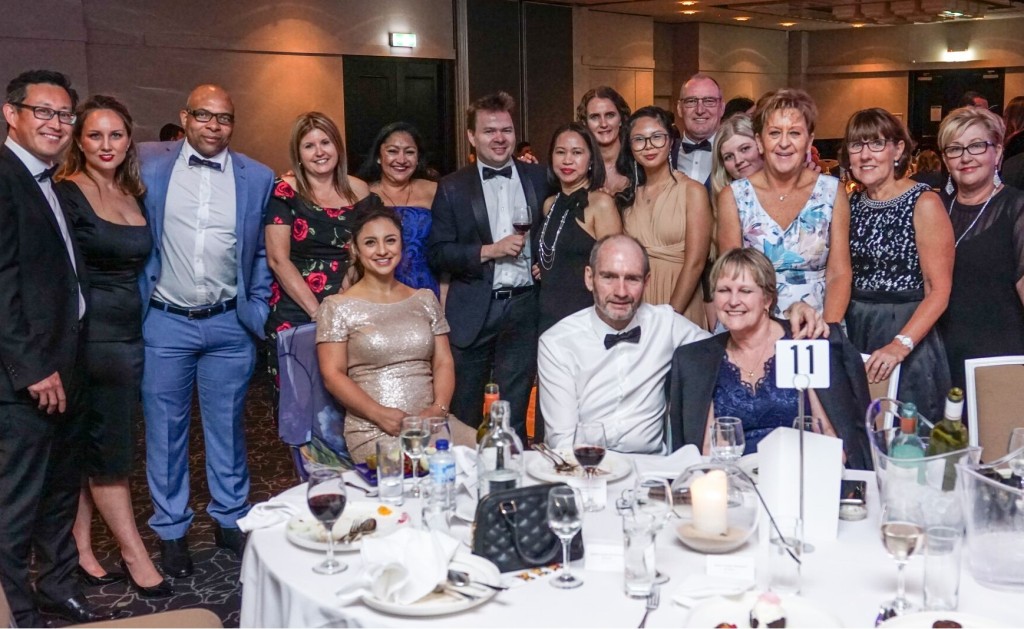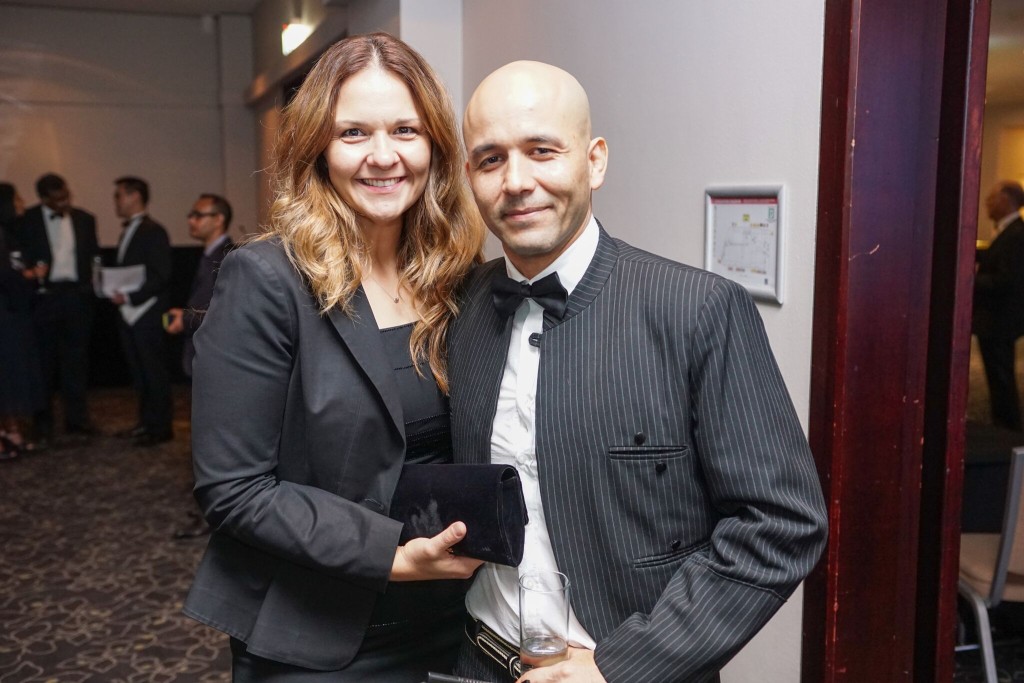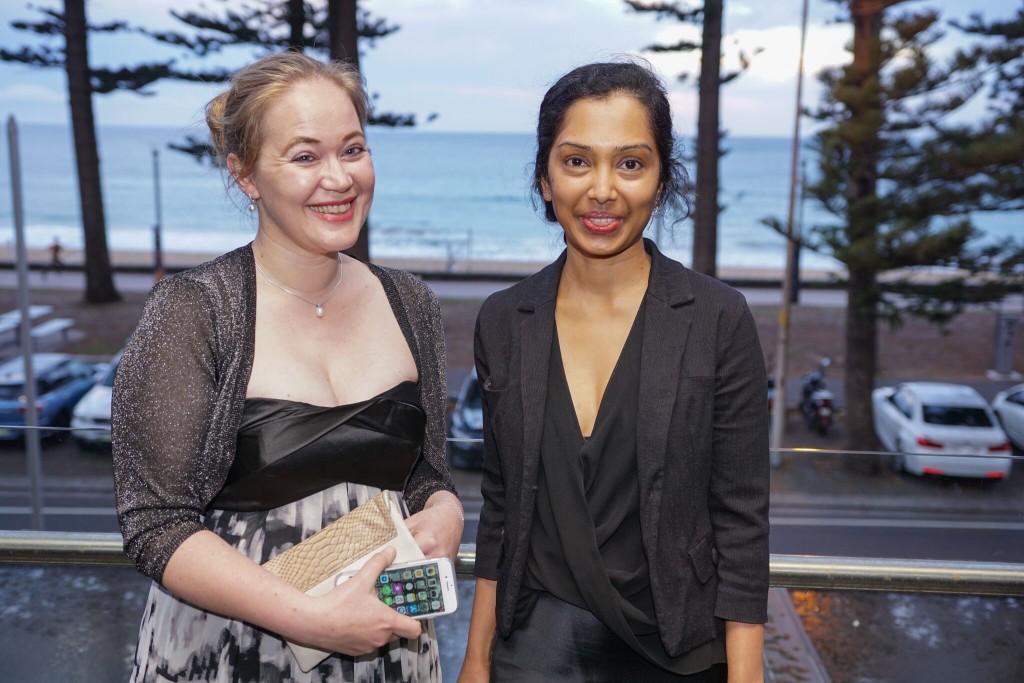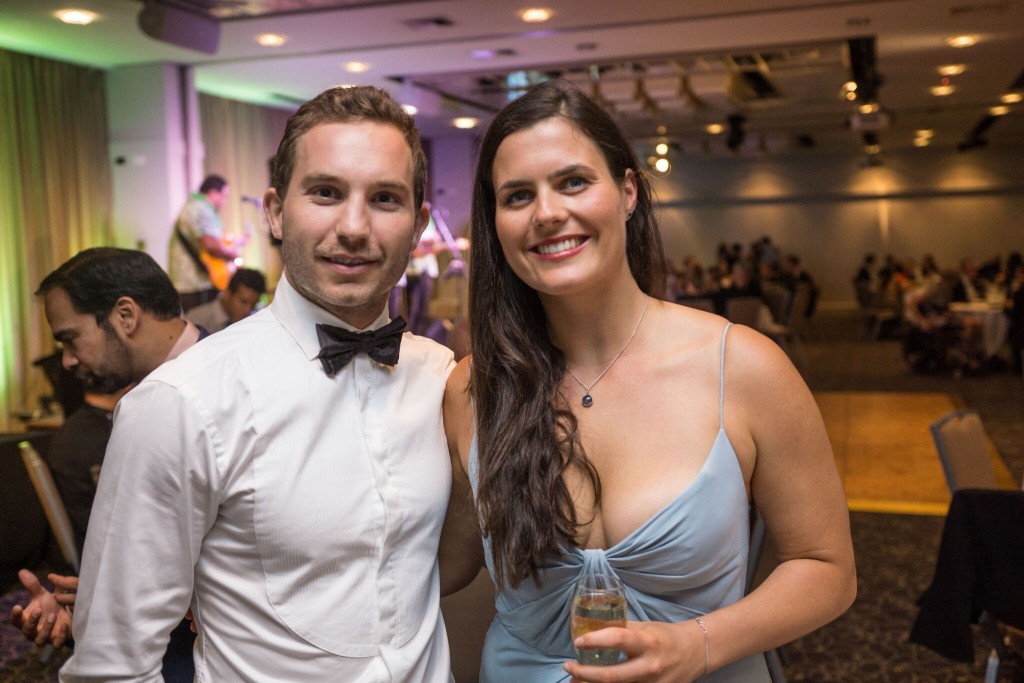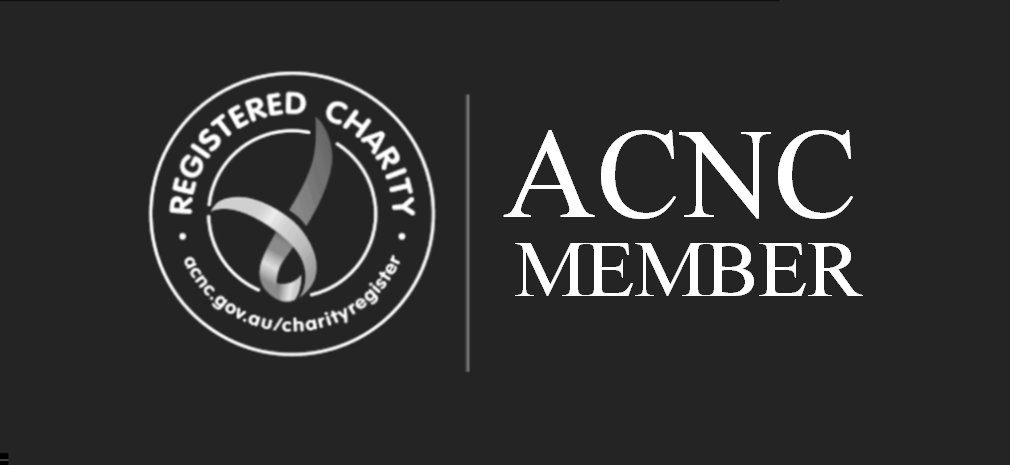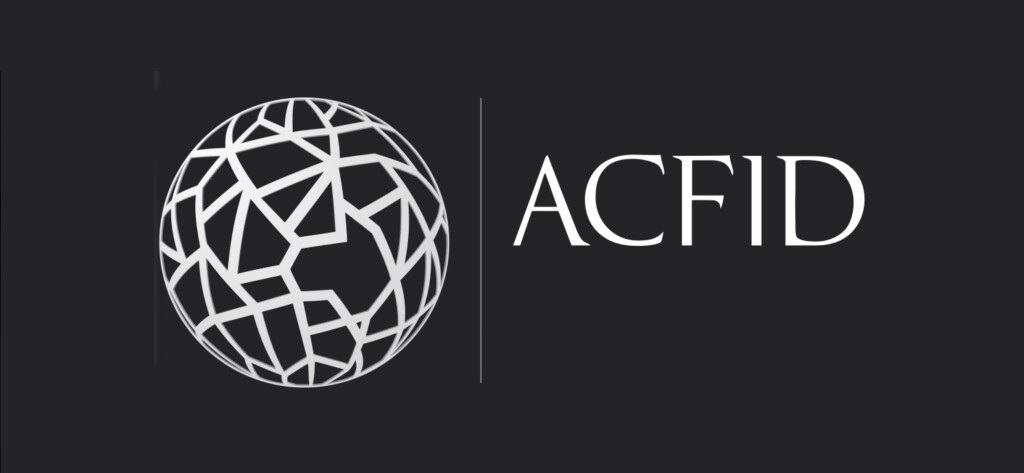KEY FINDINGS
The challenges to internal resilience in the South-Pacific Islands are both structural — in the form of issues arising from population growth, urbanisation, land, immigration, health, and gender relations — and particular to the political situation in each Island nation.
The inability of South-Pacific states to match service provision in cities with their growing populations is a major challenge to resilience.
Of all political issues in Papua New Guinea, loss of customary land is the most likely to provoke protest and conflict.
EXECUTIVE SUMMARY
The South Pacific Islands are highly diverse in political status, population, development, migration prospects, and potential for instability. Resilience is most under challenge in western Melanesia: Papua New Guinea, Solomon Islands, and Vanuatu are states-in-formation characterised by extraordinary linguistic and group diversity giving rise to weak consciousness of nationhood. Fiji is different: a weak democracy but a strong state. Many observers see increasing tensions, disputes, and violence over land in South-Pacific urban areas as people’s traditional connections with rural villages diminish and landlessness becomes more common.
The ‘new Chinese’ in the region tend to be resented, and the potential for a return to conflict between South-Pacific Islanders and Chinese remains. Health systems vary in effectiveness across the region and are least effective in Papua New Guinea. Life for women in many South-Pacific countries is routinely constrained by fear of men, and women experience a high level of personal insecurity. Democracy has survived since independence in most South Pacific countries, with the key exception of Fiji. Nauru has recently lurched towards authoritarianism and Fiji’s stability is too dependent on one man, Prime Minister Frank Bainimarama. PNG’s elections continue to be dominated by money politics. Bougainville is internally divided in the lead-up to the 2019 referendum
INTRODUCTION: A DIVERSE REGION
The challenges to internal resilience in the South- Pacific Islands are both structural — in the form of issues arising from population, urbanisation, land, immigration, health and gender relations — and particular to the political situation in each Island nation. The total population of the Pacific Islands is forecast to grow from 11 million to 17.7 million or more than 60 per cent by 2050, mostly in just four countries: Vanuatu, Kiribati, Solomon Islands, and Papua New Guinea. This growth will present particular problems for development — disputes over land, for example — in PNG.
The South Pacific Islands are highly diverse in political status, population, development, migration prospects, and potential for instability. The region consists of dependent territories, states in free association with either the United States or New Zealand, and fully independent countries. The American Samoa affiliated with the United States; French Polynesia, New Caledonia and Wallis and Futuna with France; Tokelau with New Zealand; and Pitcairn Islands with the United Kingdom. They are extensions of metropolitan states, whose considerable subsidies underwrite high standards of living and guarantee domestic stability. One possible exception is New Caledonia, where its political status remains disputed ahead of a referendum on independence in November 2018.
The freely associated states, Cook Islands and Niue, which share associated status with New Zealand) possess a safety net in the form of access to wealthier economies. Micronesians from the American part of the South Pacific are free to live and work in the United States without visas, and Cook Islanders and Niueans are New Zealand citizens, mostly choosing to live there. As many as 80 000 Cook Islanders live outside the Cooks, which has a population of 11 700, and around 20 000 Niueans live outside their home island, compared with just 1611 living on Niue.[1] Altogether, the people of the territories and freely associated states account for about a tenth of the region’s total population of 11 million.
The independent countries of Micronesia (Kiribati and Nauru), and Polynesia (Samoa, Tonga, and Tuvalu) are in a second category of Pacific countries with small populations, high aid dependence and — for the most part — post-independence histories of political stability. Possible exceptions are Tonga and Nauru. Tonga experienced serious rioting in the capital Nuku’alofa in 2006, but adopted a democratic constitution in 2010 and appears to have returned to its earlier pattern of long-term political stability. After years of frequent changes of government and states of emergency, Nauru’s politics is characterised by an authoritarian approach to parliamentary oppositions, public demonstrations, and freedom of speech but could not be described as unstable or likely to become so.
In Melanesia, however, resilience is weaker. Papua New Guinea, Solomon Islands, and Vanuatu are states-in-formation characterised by extraordinary linguistic and group diversity giving rise to weak consciousness of nationhood. Within each state, national development is also hampered by geographical barriers to easy communication between different parts of the country. Safety nets in the form of seasonal access to foreign labour markets or emigration to the Pacific Rim are less developed than elsewhere in the Pacific, except in Vanuatu which in recent years has made good use of seasonal labour schemes to New Zealand and Australia. Bougainville is a special case, having gained autonomy within Papua New Guinea after the conflict of the 1990s and promised a referendum on political status in 2019.
The other country customarily classified as ‘Melanesian’ is Fiji, which is quite different from its Melanesian neighbours to the west. When the British returned Fiji to its people at independence in 1970, they left behind the most sophisticated state apparatus anywhere in the Pacific. It remains largely in place today, giving Fiji the distinction of possessing an effective state administration. Fiji might be a weak democracy, as its succession of coups suggest and as might be concluded from prime minister and former coup leader Frank Bainimarama’s dominance over the parliament. However, Fiji is not a weak state. The potential for future instability arises from the position of the Fiji Military Forces in the distribution of power, and the possibility of another military intervention in the democratic process. Even then, a breakdown of law and order as seen in Solomon Islands that led to the deployment of the Regional Assistance Mission to Solomon Islands (RAMSI) is unlikely. Instead, ‘instability’ would take the form of a changing of the guard at the elite level, with the government of the country continuing.
Among this diversity, some key common challenges stand out. This Analysis addresses six of these challenges: demography; urbanisation; immigration; health and health systems; gender relations; and governance. It is by no means an exhaustive list, but these challenges have been prioritised over others because, taken together, they have the greatest potential to check the region’s development and undermine its resilience.
DEMOGRAPHY
The total population of the South Pacific Islands is forecast to grow from 11 million to 17.7 million or more than 60 per cent by 2050, mostly in just four countries: Vanuatu, Kiribati, Solomon Islands, and Papua New Guinea.
Country
Population in 2014 (’000s)
Projected population in 2050 (’000s)
Vanuatu
271
483
Kiribati
110
186
Solomon Islands
612
1,095
Papua New Guinea
7,300 (2011)
13,200
Source: UNFPA, Population and Development Profiles: Pacific Island Countries(Suva: UN Population Fund, Pacific Sub-Regional Office, 2014)
The outlook for the other South Pacific Island nations is for either very slow population growth over the coming decades or no growth at all. This is the case in Tuvalu, Samoa, Tonga, Fiji, Niue, Cook Islands, and Nauru. The population of the Cook Islands could even decline as people continue to leave for the prosperity offered in the United States and New Zealand.
Life expectancy rates in the South Pacific Islands are evidence of differing levels of development. They are highest in Cook Islands, Samoa, and Niue. In Melanesia life expectancy rates are far better in Vanuatu, Fiji, and Solomon Islands than in Papua New Guinea, which ranks far behind the rest of the region. In Papua New Guinea, a man can expect to live to 54 years, and a woman to 55. This is in contrast to Vanuatu, where life expectancy is 70 years for males and 73 for females.[2] According to Save the Children, almost half the children of Papua New Guinea suffer from malnutrition, shortening lives and undermining future prosperity.[3]
The most important consequence of a fast-growing population is the creation of a youth bulge, which is a large proportion of people between 15 and 24 years of age. Youth bulges can be found in populations across the South Pacific region. However, they have the potential to undermine stability mainly in countries with low emigration and limited job opportunities for the young, such as Papua New Guinea, Vanuatu, and Solomon Islands.
The new Pacific Labour Scheme, commencing in July 2018, makes a breakthrough in policy, establishing non-seasonal access by South Pacific Islanders to the Australian labour market alongside the existing Seasonal Worker Program. The admission of workers for up to three years is the kind of scheme that Pacific leaders have been requesting for more than a decade, and the initial focus on Kiribati, Tuvalu, and Nauru appropriately targets small Island states with few economic prospects. The program will be extended to other Pacific countries during 2018. South Pacific Islanders need better preparation for participating in the Australian labour market, support in skills training, and pastoral care while they are in Australia. The South Pacific Labour Scheme will include a Pacific Labour Facility that will take into account what employers want and upgrade Pacific Islanders’ skills.[4]
URBANISATION
One of the most serious conflicts in the South Pacific region over the past two decades was the five-year civil conflict in Solomon Islands from 1998 to 2003. The Solomon Islands tension, as it is called, had its origins in the explosive mix of rural-urban migration from Malaita to Guadalcanal, disputes over land ownership in the peri-urban area of the capital Honiara, and an urban population of unemployed youth available for mobilisation into competing militias. Young men with little to do were readily recruited as foot soldiers by competing sides in the struggle over land and identity. Initially an urban phenomenon, with disastrous, wider implications as it spread into rural parts of Guadalcanal, it demonstrated the vulnerability of western Melanesian cities to the eruption of conflict.
Urbanisation magnifies the effect of growing populations because Pacific urban populations are growing faster than national populations, especially in Melanesian countries. If anything, the rate of urban growth in the Pacific is under-estimated in official statistics.[5]
The inability of states to match service provision with growing urban populations is a major challenge to resilience, often in national capitals.
More than half the people of Fiji live in towns, and more are making the rural-urban shift. The urban growth rate in Solomon Islands is double that of the country as a whole, and PNG’s urban population is expected to reach two million by 2030. Papua New Guinea has the lowest rate of urbanisation in the Pacific at 13 per cent of the population but the highest absolute number of urban citizens, now more than one million. PNG’s urban population is greater than the total populations of the Pacific’s sub-regions of Polynesia and Micronesia. Some small island states are as affected by urbanisation as larger ones. South Tarawa, home to more than half the population of Kiribati, has a population density similar to that of Hong Kong, and its population grew from 50 000 to 56 000 between 2010 and 2015.[6]
Pacific towns or cities typically engulf a number of traditional villages as they grow. The villages remain, often with traditional forms of governance intact and with their people harbouring ambitions for compensation for land lost. The cities then expand as rural migrants create informal and squatter settlements, typically consisting of people from the same rural kinship or language group, and constituting in themselves systems of mutual support and protection based on kin loyalties. Port Moresby has been home to such settlements since the 1960s, which number around 100 and constitute a huge informal urban sector, one that probably contributes to the city’s security overall because of its kinship group structure. Kinship ties have so far proved strong but are gradually loosening under the impact of individualism. Similar developments in Fiji have created a connected series of settlements from Suva to Nausori.
The Pacific city, then, is a patchwork of modern urban centres, villages, informal settlements (where residents informally lease land), and squatter settlements (where residents simply occupy land) with complex and overlapping issues of land ownership and governance. Municipal regulations, often originating in colonial times, are directed at development in situations where orderliness has long since been replaced by the jumble of makeshift houses built by people seeking a better life or, in the case of Fiji, also people whose rural land leases have expired. Settlements reverse the priorities of conventional urban planning, with land occupied first in the absence of tenure, dwellings built in the absence of regulation, and services supplied last or in some cases not at all. As researchers have noted: “Many urban settlements are without services or basic infrastructure. Linkages to villages are fading as new generations grow up in settlements. Urban-based informal safety nets are being stretched as costs of living escalate, and many struggle to gain steady wage employment.”[7]
Political commitment to urban reform in the Pacific is weak. Melanesian governments, with the possible exception of Fiji, tend to see rural-urban migrants as illegitimately in the city and subject therefore to periodic harassment and even eviction. Official recognition of the informal economic sector in Port Moresby, for example, has been slow and betel nut markets in particular have been under siege from authorities. The National Capital District Betelnut Control Law 2013bans the sale and consumption of betel nut in public places within the National Capital District, including villages and settlements, a measure that contributes to ‘cleaning up the city’ but at the same time places barriers in the way of an economic activity that supports the livelihoods of numerous urban residents.[8]
Under these circumstances, the potential for conflict in Pacific cities is considerable. Land boundaries are often ill-defined and contested by competing groups. Landowners may object to development proposals by the government; squatters, who may have informal arrangements with landowners, may be subject to eviction; popular protests may be staged against evictions; issues of compensation are ever-present; and, at least in Papua New Guinea, the authorities are unable to create the conditions of law and order expected of a modern city. The response has been the growth of private security companies, which guard residences and businesses, patrol mining sites, and even provide security for the PNG government. By some estimates private security guards outnumber police in Papua New Guinea three to one.[9]
Many observers see a trend towards increasing tensions, disputes, and violence over land in Pacific urban areas as people’s traditional connections with rural villages diminish and landlessness becomes more common. As noted in an Australian National University report on land transformations in Melanesia: “It is a tired romanticism that everyone has land to ‘go back to’ or, indeed, wishes to return to traditional villages.”[10] Increasingly, kin connections between city and village are either weakening or being severed (although mobile phones counter this trend), and some urban residents are in the city precisely because there is little village land for them.
IMMIGRATION
For the most part, the South Pacific Islands are countries of emigration rather than immigration. Chinese immigrants are the exception, making China the only development partner whose citizens migrate to the Pacific Islands region. Estimates of the total population of Chinese and Chinese-descended people in the Pacific Islands vary enormously, but their social and economic impact on the region’s small states has been considerable. Some are ‘old Chinese’, descendants of those who arrived a century or more ago. Others are ‘new Chinese’, including the descendants of migrants re-migrating from countries such as Malaysia and Singapore, and the new entrepreneurial migrants from mainland China — mainly from Fujian province — who have migrated since the 1990s in what are, for Pacific Islanders, large numbers.
The new Chinese are ‘sojourners’, those with no intention of staying or becoming citizens. They migrate in order to get the documentation to enter more developed countries such as Australia, New Zealand, and the United States. They also arrive as workers for Chinese companies with investments in the Pacific such as the Ramu Nickel project in Papua New Guinea.
The largest group are new entrepreneurial migrants, who typically arrive on tourist visas, pay bribes to immigration officials, or walk off fishing boats at Pacific ports. Most are poorly educated, have no professional or trade qualifications, and could not legally enter Pacific Island countries. They start small trading concerns, investing in bakeries, low-end restaurants, and clothing stores — trading activities usually reserved for Pacific Islanders. The occasional police raid has little impact on these Chinese small businesses, particularly as they often provide a service that would not otherwise be available.
Many South Pacific Islanders resent the presence of the new Chinese, seeing them as non-Christian interlopers monopolising construction jobs and small business opportunities at the expense of the locals, and corrupting local politicians. Chinese employers sometimes confirm these prejudices by treating local employees with contempt and lack of trust, sitting on high stools in their tradestores to supervise, monitor and discipline those who work for them. Even the Chinese authorities disown Chinese migrants of this kind. An official inquiry into the 2006 Honiara riots by the Guangdong Office for Overseas Chinese Affairs concluded that the Solomon Islanders’ assaults on Chinese stores was the fault of their owners: “They have neither the personal skills nor the capacity to overcome barriers to doing business … ‘Improper’ behaviour has drawn the contempt not only of the old overseas Chinese community, but more seriously it has transformed local people from respecting the Chinese to resenting their presence.”[11]
During the Honiara riots in 2006, China was forced to charter aircraft to evacuate its citizens. Later that same year, riots in Tonga, in part anti-Chinese, led to a short-lived intervention by Australia and New Zealand. Further anti-Chinese agitation followed in parts of Papua New Guinea in 2009.
Although the era of major anti-Chinese riots in the Pacific appears to be over, anti-Chinese sentiments endure. Following a series of attacks on Chinese shopkeepers in Tonga in 2016, the Prime Minister ‘Akilisi Pohiva apologised to the Chinese community, yet a few months later he was warning that Chinese businesses paid no tax and would take over the country. As Samoan MP Lealailepule Rimoni Aiafi noted in early 2017: “The truth is it’s so hard for our people to compete with the Chinese shops. Our people used to own supermarkets and run their own stores. But it’s so hard for them to compete with these Chinese businesses. As you can see all around Samoa, most of the supermarkets and wholesales [sic] are owned by Chinese.”[12] At the same time there are periodic labour disputes between Chinese companies and their Pacific Islander employees, as happened twice in 2017 during a restoration project for Malapoa College by a Chinese construction company in Vanuatu.
The potential for a return to conflict between Pacific Islanders and Chinese in the region therefore remains. The most likely source of future problems is land ownership. It has been argued, for example, that the introduction of the Torrens title land system in Samoa since 2008 might open the way to the alienation of customary land. One Samoan village, Salelologa, has already prohibited any Chinese-owned business on such land in their jurisdiction, fearing they might lose it.[13]
HEALTH AND HEALTH SYSTEMS
Poor health and health systems undermine development and weaken the legitimacy of governments even as they represent a considerable cost to national economies. In relation to health and stability in the Pacific Islands, Papua New Guinea looms as the country where these effects are most evident. It has the highest maternal mortality ratio in the Pacific, the lowest proportion of births attended by skilled professionals, the highest infant mortality rate, the highest prevalence of HIV, and the lowest life expectancy at birth. These are structural factors with no immediate connection to political stability. Nevertheless, they constitute an underlying cause of political and economic vulnerability, as well as being the face of much human suffering.
Health systems vary across the South Pacific Islands. They are best in the American and French territories and in the New Zealand associated states, where metropolitan standards of health care and infrastructure apply. They are good in one of the American freely associated states, Palau, but less impressive in the other two, the Marshall Islands and FSM, where infant mortality and life expectancy are poor when compared with the United States. They are worst in western Melanesia, especially Papua New Guinea, where the health system bequeathed at independence by Australia has been allowed to deteriorate, and where the absence of medicines and equipment in aid posts and even hospitals is common. Port Moresby General Hospital and hospitals in Kimbe, Daru, Rabaul, Mt Hagen, Buka, Kerema, Vanimo, and Mendi have all experienced serious shortages of drugs and basic medicines. For example, in mid-2017, in an administrative deficit typical of Papua New Guinea, pharmaceuticals were available but had not been distributed as suppliers said they had not been paid by the government.[14]
Food security is not a problem for South Pacific Islanders in Fiji, Polynesia and Micronesia, although it may arise in the future due to climate change and the looming problem caused by the over-exploitation of coastal fisheries. For the moment, people have plenty to eat. Things are different, however, in Papua New Guinea, where perhaps a million people lack sufficient protein. Experts estimate that “approximately 45% of PNG children are stunted, 18% are underweight, 5% severely underweight and 5% have wasting malnutrition”. A survey by 16 provincial hospitals from 2009 to 2014 found that 11 per cent of hospital admissions were suffering “severe malnutrition”.[15] While food insecurity is not yet a major problem in Papua New Guinea, it occurs periodically because of frost and drought, as in 2015.[16]
Non-communicable diseases are the principal health problem for Pacific Islanders. One estimate is that non-communicable diseases account for 70 per cent of all deaths in the South Pacific, many of them premature (that is, before 60 years of age).[17] This is in part due to the transition from traditional foods to rice and processed foods, resulting in Vitamin A deficiency, diabetes, hypertension, heart disease, and obesity. The nine most obese nations in the world are all in Polynesia or Micronesia — American Samoa, Nauru, Cook Islands, Tokelau, Tonga, Samoa, Palau, Kiribati and the Marshall Islands — and the health of their people is suffering. Although estimates of the prevalence of diabetes vary, it is a particularly serious health problem in Nauru. A paper prepared for the Joint Forum Economic and Health Ministers Meeting in 2014 argued that, “NCDs are already causing a health crisis in the Pacific, with most of the trends and risk factors pointing to a substantial worsening of the situation”.[18] The Ministers “underscored the gravity of the NCD situation in the Pacific, with significant and long-term negative effects on both the health and the economies” of Pacific nations.[19]
At the same time communicable diseases such as tuberculosis and HIV/AIDS continue to afflict Pacific Islanders across the region, especially in Papua New Guinea. The country has a far greater incidence of HIV infection than anywhere else in the region and a consequently high rate of Tuberculosis (TB) infection, including both Multidrug-Resistant TB (MDR) and Extensively Drug Resistant TB (EDR).[20] Western Province, National Capital District and Gulf Province are hotspots of MDR infection, and Daru Island has been a particular concern to specialists in the field, with a concentration of people suffering from drug-resistant forms of the disease. PNG’s TB epidemic became a border problem for Australia in 2011, when the federal and Queensland governments closed health clinics in the Torres Strait to Papua New Guinean TB patients in favour of strengthening the health system on the PNG side of the border. Since then Australia has allocated $60 million to combat TB in Papua New Guinea, with a focus on upgrading Daru Hospital, training health workers, buying drugs, and strengthening the PNG government’s TB response.[21]
GENDER RELATIONS
Women are a tiny proportion of members of parliament in independent Pacific Island countries (the situation is different in the French territories). Under reforms that applied to the 2016 election, Samoa has five female MPs, one of whom — Fiame Naomi Mata’afa — is now the country’s deputy prime minister. But Tuvalu, Nauru, Tonga, and Solomon Islands each have only one female MP while Papua New Guinea, Vanuatu, and FSM have none. The PNG parliament passed an act in 2011 to introduce 22 reserved seats for women but it failed to clear constitutional hurdles.
The gender imbalance in Pacific parliamentary representation betrays a deeper social phenomenon across the Pacific Islands: male violence. Life for women in many Pacific countries is routinely constrained by fear of men, and women experience a high level of personal insecurity. Domestic violence in Papua New Guinea has been described as a “pandemic, equalling something in a war zone”.[22] Most adult women in Papua New Guinea have been raped at some time in their lives, and the incidence of gang rape is extremely high by international standards. The Fiji Women’s Crisis Centre revealed in 2015 that 43 women in Fiji were injured in domestic violence incidents every day, and of those ten would lose consciousness and one would become permanently disabled.[23]
Changes in the direction of gender equality, however, will inevitably take place over a long period of time in the Pacific as international awareness of gender issues is felt and acted upon, as Pacific women organise, police forces change, and a new consciousness has its effect on legislation and behaviour. A long-term commitment of the kind made by Australia in its aid program is an essential element in improving the status of women in the region and therefore enhancing its development prospects.
GOVERNANCE
The governance systems of the Pacific Islands need to be understood in their cultural context, one that historically placed high value on kin connections and kin loyalty and a distribution of power, wealth, and opportunities according to these principles. For many Pacific Island countries, the state as the modern form of political organisation came with colonial rule. After a century or so of colonial administration, the foreigners departed, leaving behind a Westminster or American presidential system of government. The system had only been introduced to the Pacific Islanders in the last few years before independence and was supposed to run along Western lines after independence. Pacific Islanders soon adapted these imported systems to their own expectations and assumptions, creating the contemporary forms of Island government seen today.
The imported and adapted systems of government worked better in Fiji and Polynesia than elsewhere in the Pacific region, possibly because they were superimposed on hierarchical societies and after a longer period of colonial rule. They worked least well in western Melanesia, where hierarchy was far less common, languages and societies were legion, colonial rule was briefer, and cultural assumptions about rulers and ruled strong.
Yet the democratic record of South Pacific Island countries is impressive and stands in stark contrast to the sub-Saharan African experience, where military coups became the norm within a short period after independence. Except for Fiji and Solomon Islands, regular democratic elections have determined who governs independent Pacific countries.
Kiribati, Tuvalu, and Samoa have been politically stable over many decades. Indeed, some regard Samoa as too stable, with the Human Rights Protection Party winning every election for the past 30 years and Tuilaepa Sa’ilele Malielegaoi holding the position of prime minister for more than 20 years. Tonga experienced riots in the capital in 2006 but the democratic reforms of 2010 appear to have returned the country to long-term stability. The decision of King Tupou VI to dissolve parliament a year in advance and to call fresh elections in November 2017 was entirely constitutional and did not reignite unrest;[24] in fact, it confirmed the position of the Democratic Party of the Friendly Islands under ‘Akilisi Pohiva. In recent years prime ministers of Vanuatu have come and gone rapidly in parliamentary votes of no confidence. Ten changes of leaders have taken place in nine years, and the present government of Charlot Salwai is unusually long-lived, having survived since early 2016. Yet Australia changed prime minister five times in eight years, and Vanuatu has the distinction of having taken strong court action against corruption by members of parliament, 14 of whom were jailed for bribery in 2015 and banned from returning to parliament for ten years. The events of 2015 “suggest a degree of underlying strength and resilience in Vanuatu’s governance framework”.[25]
Nauru: The suppression of dissent
Nauru is going in the opposite direction. Nauru’s recent political stability has come at the cost of increasing authoritarianism. As host of the Australian detention centre, the Nauru government has entrenched executive power in the knowledge that criticism from Canberra will be low-key at most. Its three targets have been the judiciary, opposition MPs, and freedom of speech.[26] Nauru’s example may serve to demonstrate to the region that the commitments of the Biketawa Declaration to democracy and the rule of law do not have to be taken too seriously, and that an authoritarian approach to parliamentary opposition pays dividends.
Fiji: A democracy by military permission
Fiji has only partially returned to democracy since the elections of 2014. Fiji is a democracy by military permission, and the military forces are charged to intervene once again if necessary. The 2013 constitution provides that “It shall be the overall responsibility of the Republic of Fiji Military Forces to ensure at all times the security, defence and well-being of Fiji and all Fijians”, a capacious definition of the military’s role that could easily be invoked to justify another coup.[27] A series of decrees from before 2014 remain in force, including the Media Decree, which encourages self-censorship by media outlets and curbs their freedom, and the Public Order Amendment Decree, which requires political parties to seek official permission to hold meetings.
As for parliament, it has become the means by which Bainimarama dominates. His ruling party Fiji First holds 32 of the parliament’s 50 seats, and uses its majority to silence and exclude opposition MPs, three of whom have been suspended for trivial offences or expressions of unwelcome opinion. Social Democratic Liberal Party MP Ratu Naiqama Lalabalavu was suspended from parliament for two years for criticising the Speaker. His party colleague Ratu Isoa Tikoca was suspended for the rest of the parliamentary term for naming Muslims serving as state officials, and the then leader of National Federation Party, Roko Tupou Draunidalo, was suspended for two years for calling the Minister for Education a fool. All three suspensions were in defiance of Standing Orders.[28] The Parliamentary Powers and Privileges Bill, not yet enacted, promises stiff penalties including imprisonment for anyone who, outside Parliament, defames, demeans or undermines “the sanctity of Parliament, the Speaker or a committee”.
For the moment, stability reigns in Fiji. The economy is likely to grow by 4 per cent in 2018 as Fiji rebuilds after Cyclone Winston. Fiji’s diplomatic connections have been restored, and it is now a recognised small player on the UN stage and in climate change diplomacy. Smaller parties are proliferating in advance of the 2018 elections, but Fiji First is likely to leverage Bainimarama’s charisma and its own incumbency to secure another victory.
Yet the present order in Fiji depends to an extraordinary extent on one man, Frank Bainimarama, whose eventual departure from the scene is likely to thrust the country into another political crisis.
Papua New Guinea: An adapted Westminster system
Governance in Papua New Guinea is characterised by a lack of party discipline and ideology, strong obligations to kin in political power, gendered political representation, a limited state with poor service provision, and the primacy of politics in the calculations of ambitious people, given that the state is seen as the principal source of resources.
Under these circumstances, direct government funding of MPs has become an additional characteristic of governance. A growing proportion of government funds is being directed to MPs for them to spend on their constituencies, rather than being funnelled through national departments responsible for different areas of government such as education or health. The state-citizen relationship is being mediated as much through individuals who can use it for personal patronage as through state bureaucracies. The system is not new, and has existed in the form of Electoral Development Funds in Papua New Guinea since the early 1980s, but it has mushroomed in recent years (as it has in Solomon Islands). Whether this system is likely to contribute to political instability is a matter of debate. Some see it as undermining a central tenet of the Westminster system to distribute government goods and services through dedicated bureaucracies. Other observers are investigating whether direct spending systems can be harnessed for development.[29] Direct funding of MPs to some extent accords with what Melanesian voters want, which is immediate access to a pipeline of government resources. At the same time it weakens and distorts the implementation of government policy and programs.
Elections in Papua New Guinea have long been rough-and-tumble affairs, with inaccurate and incomplete electoral rolls, uneven supervision of the voting, buying and selling of votes, and tampering with results. The 2017 election drew international attention for living up to this reputation. The normally reserved Commonwealth Observer Team, while satisfied that the election broadly reflected the nation’s wishes, nevertheless drew attention to “the significant number of eligible voters whose names were not on the common roll” and “reported incidents of alleged vote buying, including through using state resources and provincial and district development funds made available to incumbents”.[30] Money politics will continue to be central to the electoral process in Papua New Guinea.
Nevertheless, PNG parliamentary politics is no longer plagued by frequent votes of no confidence and changes of government. For the past five years, and again following the 2017 election, PNG governments have had the vast majority of the 111 members of the House of Assembly on their side.
Of all political issues in Papua New Guinea, loss of customary land is the most likely to provoke protest and conflict. The Special Agricultural and Business Lease (SABL) system, which dates from 1979, was designed to make customary land available for development on terms that suited the landowners. SABLs were originally seen as giving landowners security while their land was temporarily being put to productive use by leaseholders. In fact, SABLs were subject to high levels of corruption and became little more than an easy route to a wholesale land grab by unscrupulous operators. A 2013 report concluded that “over 5.2 million hectares of customary land around the country had been alienated, mostly for ‘special agriculture activities’ over virgin forest tracts containing tropical hardwoods”, and recommended that SABLs be abolished.[31]
The PNG government has been slow to respond, repeatedly announcing that SABLs have been cancelled when in fact they have not. Prime Minister Peter O’Neill told parliament in November 2016 that he was “pleased to say that all the SABL leases are to be cancelled, instruction has now gone to the Lands Dept and as of today … I can assure you that leases are now being cancelled and where there are projects now existing, we’ve encouraged the landowners to renegotiate many of those lease arrangements that they have made with the developers”. O’Neill repeated that assurance in March 2017, claiming that all SABL licences in Papua New Guinea were illegal, and following the election a few months later the new Lands and Physical Planning Minister Justin Tkatchenko announced the establishment of a government committee to cancel all fraudulent SABLs. When journalists pointed out that “prime minister Peter O’Neill and others in the government had repeatedly promised to cancel the fraudulent SABLs, but nothing had happened”, Tkatchenko claimed that “the committee would finally put words into action” and that 90 per cent of SABLs, which account for 12 per cent of the country’s land, would be reviewed with a view to cancellation.[32] By October 2017, Tkatchenko was admitting that there had been “stealing of public, customary, and other land, where no consultations had ever been done, but his ministry would get to the bottom of the issues before the New Year”.[33] Similar assurances were being given in January 2018.
The Southern Highlands of Papua New Guinea remains a centre of unrest. Roadblocks arising from local grievances have plagued the Highlands Highway since the 2017 election; the Wabag–Porgera road was blocked for two weeks; there have been more roadblocks at Surunki, Jiwaka, and Chuave, disrupting the Barrick Niugini’s mine operations at Porgera; and hijackers torched two of the company’s trucks near Laiagam.[34] Typical grievances are the death of people in road accidents or at the hands of police, and claims for compensation.
Disturbances of this kind, common as they are, do not threaten the system of governance. They might prevent hundreds of trucks from reaching their destinations, and do economic damage even as they discourage investors. But they do not bring the stability of the whole country into question. The same is true of inter-group fighting in the Highlands, where thousands have been killed in the last decade. Tragic as these events are, there is no evidence that they threaten the stability of the nation.
Bougainville: Countdown to the Independence Referendum
The scene of a destructive civil war in the 1990s, Bougainville confronts an uncertain future. The 2001 peace agreement between Bougainville and Papua New Guinea promised Bougainvilleans a say on their political status, and the independence referendum is due to take place in 2019. A Bougainville Referendum Commission will oversee the vote. The two sides have now agreed on key outstanding issues, above all the payment by Papua New Guinea of outstanding restoration and development Grants worth US$132 million.[35]
Bougainvilleans, however, cannot agree on the future of the copper mine at Panguna, which bankrolled the province and Papua New Guinea itself until its forced closure in 1989. John Momis, president of the autonomous province, can see no viable economic future for Bougainville without mining, but protests by landowners against Bougainville Copper Limited — now reconstituted as a company partly owned by the Bougainville government — erupted in 2017, leading Momis to declare an indefinite moratorium on mining at Panguna for fear that its opening might “ignite another war”. To operate, Momis said, Panguna would need a “social licence”.[36] The episode echoed the original conflict, with government revenues boosted by mining and landowners, in this case the Special Mining Lease Osikaiyang Landowners Association, exercising a veto over it.
The lead-up to the referendum in 2019 is likely to see increasing tensions within Bougainville, and between Bougainville and Papua New Guinea. Under the terms of the 2001 peace agreement, Papua New Guinea is not obliged to grant independence to Bougainvilleans even if they vote in favour of it. If it does not, the impact on stability on both sides of the border is likely to be substantial.
CONCLUSION: WHAT CAN AUSTRALIA DO?
Australia’s commitment to the security of the Pacific Islands region over the past two decades is clear: Australia deployed peacekeepers to Bougainville from 1998 to 2003, brokered peace between Papua New Guinea and Bougainville in 2001, and joined New Zealand in the Joint Task Force of troops and police sent to Tonga in 2006. Australian Federal Police were despatched to act as support staff in Nauru, Samoa, Solomon Islands, Tonga and Vanuatu, as well as under the Papua New Guinea–Australia Policing Partnership, and Australia participates in a Defence Cooperation Program with the PNG Defence Force. The 2013 National Security Strategy affirmed Australia’s “enduring interest in the security, stability and economic prosperity of the Pacific Islands region”, and successive Defence White Papers have defined Australia’s second-highest defence interest, after the defence of the continent, as having “a secure nearer region”.[37] The 2017 Foreign Policy White Paper devotes an entire chapter to this region, arguing that the “stability and economic progress of Papua New Guinea, other Pacific island countries and Timor-Leste is of fundamental importance to Australia”.[38]
Australia remains the key external state to which Pacific Island countries turn for assistance in times of emergency, and retains its historical significance for the region through myriad commercial, aid, diplomatic, and personal connections, amplified in recent years by growing contacts in sport and seasonal labour schemes.
Yet East Asian political, investment, trade, and commercial presence in the Pacific Islands is now on such a scale as to reshape the region. Pacific Island governments enjoy a new freedom in foreign policy. But liberal democratic norms might well come under increasing threat. Democracy in the Pacific Islands has never been a carbon copy of its Western counterparts, but the divergence is set to grow wider under new pressures.
Under these circumstances, domestic developments in Pacific Island states matter more than ever to Australia, and Canberra can do more to move events in the right direction. The six challenges to stability described above can be met with six responses from Canberra:
Population: Australia needs to craft its policy in the expectation that the 60 per cent increase in regional population by 2050 will be concentrated in four countries: Papua New Guinea, Solomon Islands, Kiribati, and Vanuatu. Youth bulges in those four populations are predicted. Australia has already made a breakthrough on labour mobility by introducing a new non-seasonal labour scheme alongside the existing Seasonal Labour Program.That is to be welcomed and should be extended beyond Kiribati, Nauru, and Tuvalu as soon as possible.
Urban service provision: Assisting Pacific countries with urban development and the provision of urban services should be an Australian policy priority. The impacts of population growth are magnified in urban centres, and vulnerability to conflict has already been demonstrated in Solomon Islands.
Border control: Australia should step up its existing cooperation with Pacific governments, especially Papua New Guinea, on tightening border controls and immigration systems, because illegal immigration fosters anti-Chinese sentiment in the region.
Health: Australia should make an even greater contribution in the health field. Much is already being done, especially on tuberculosis in Papua New Guinea. The situation is nevertheless serious enough in Papua New Guinea to warrant an even greater commitment.
Gender equality: A long-term commitment to gender equality of the kind already made by Australia in its aid program is essential to improving the status and safety of women in the region. Australia should incorporate policies into its overarching strategy that aid a smooth transition towards more gender equality in the region.
A focus on governance: Australia should do more to indicate its disapproval of Nauru’s recent curbs on the judiciary, the media, and the opposition; should work with Papua New Guinea and Solomon Islands on realising the development potential of direct constituency funding of members of parliament; and should encourage the PNG government to enforce its promise to cancel many of the Special Agricultural and Business Leases. Australia will need to employ deft diplomacy with both Bougainville and Papua New Guinea in what could be a serious security crisis in the lead-up to and after the 2019 independence referendum.
Any analysis of resilience in the Pacific has the potential to focus on the negative rather than the positive, and runs the risk of defining the Pacific Islands in terms of their perceived deficits, a besetting temptation for Australian policymakers. As anyone who has lived in the Pacific knows, the region is also characterised by notable cultural strengths, including the bonds of family, community and church, and the remarkable vitality of language, dance, feast, celebration, and sense of belonging. Not least significant is the persistence of Island forms of democracy across most of the Pacific since independence. These things should be borne in mind as Australia seeks to step up its development engagement with a region that enjoys the sympathetic support of most Australians.
References
[1] Figures are based on Cook Islands Statistics Office, Cook Islands Population Census, 2006 (Rarotonga: Ministry of Finance and Economic Management, 2006), xvi, http://www.mfem.gov.ck/images/documents/Statistics_Docs/5.Census-Surveys/4.Census-Report/2.2006_COK-population-and-dwelling-census-report.pdf; Statistics New Zealand, QuickStats about Pacific Peoples:2006 Census, 2, qstats-about-pacific-peoples-2006-census.pdf; and Department of Immigration and Citizenship,The People of Australia: Statistics from the 2006 Census(Canberra: Commonwealth of Australia, 2008), Table 3, https://www.dss.gov.au/sites/default/files/documents/01_2014/poa-2008.pdf, which lists residents of Australia by birthplace; New Zealand Government, “Cook Islands Populations by Place of Residence 2010s”, https://teara.govt.nz/en/interactive/868/cook-islands-populations-by-place-of-residence-2010s.
[2] UNFPA,Population and Development Profiles: Pacific Island Countries(Suva: UN Population Fund, Pacific Sub-Regional Office, 2014), 58, 94.
[3] Save the Children, “New Report Reveals Child Undernutrition Cost the PNG Economy Up to $1.5 Billion in a Single Year”, Media Release, 22 June 2017. https://www.savethechildren.org.au/about-us/media-and-publications/media-releases/media-release-archive/years/2017/new-report-reveals-child-undernutrition-cost-the-png-economy-up-to-$1.5-billion-in-a-single-year.
[4] Department of Foreign Affairs and Trade, “Pacific Labour Scheme”, March 2018, http://dfat.gov.au/geo/pacific/engagement/Documents/stepping-up-australias-pacific-engagement-labour-scheme.pdf.
[5] Asian Development Bank, The Emergence of Pacific Urban Villages: Urbanisation Trends in the Pacific Islands(Manila: ADB, 2016), 14, https://www.adb.org/sites/default/files/publication/201291/pacific-urban-villages.pdf.
[6] National Statistics Office, 2015 Population and Housing Census, Preliminary Report (Tarawa, Kiribati: Ministry of Finance and Economic Development, 2016), http://www.mfed.gov.ki/sites/default/files/Revised%20Census%20Preliminary%20Report%202%20020516%20update%20%5B1306646%5D.pdf.
[7] Meg Keen and Julien Barbara, “Pacific Urbanisation: Changing Times”, State Society and Governance in Melanesia,In Brief2015/64, http://ssgm.bellschool.anu.edu.au/sites/default/files/publications/attachments/2016-07/ib2015.64_keen_and_barbara.pdf.
[8] Timothy Sharp, “Fear and Loathing in Port Moresby: Chewing Over the Betel Nut Ban”, State Society and Governance in Melanesia, In Brief2013/10, http://bellschool.anu.edu.au/sites/default/files/publications/attachments/2015-12/SSGM_IB_2013_10_Sharp_0.pdf.
[9] Sinclair Dinnen, “Internal Security in Papua New Guinea: Trends and Prospects”, in Papua New Guinea; Seven Snapshots of a Nation, Jonathan Pryke ed (Sydney; Lowy Institute, 2017), http://interactives.lowyinstitute.org/publications/PNGin2017/png-in-2017-internal-security-png-trends-prospects.html.
[10] Sarah Mecartney and John Connell, “Urban Melanesia: The Challenges of Managing Land, Modernity and Tradition”, in Kastom, Property and Ideology: Land Transformations in Melanesia, Siobhan McDonnell, Matthew G Allen and Colin Filer eds (Canberra: ANU Press, 2017), 60.
[11] Graeme Smith, “Chinese Reactions to Anti-Asian Riots in the Pacific”,Journal of Pacific History47, Issue 1 (2012), 97.
[12] Sarafina Sanerivi, “Samoa MP Raises Alarm about ‘Influx of New Chinese Businesses’”, Samoa Observer, 27 January 2017.
[13] Iati Iati, “The Implications of Applying the Torrens System to Samoan Customary Lands: Alienation through the LTRA 2008”, Journal of South Pacific Law(2016), Issue 1, 66–88; Ilia L Likou, “Savai’i Village Bans Chinese-Owned Shops”, Samoa Observer, 17 February 2017.
[14] Gorethy Kenneth, “Hospitals Out of Drugs”, Post-Courier, 30 August 2017, https://postcourier.com.pg/hospitals-out-of-drugs/.
[15] Michael Landi et al, “Severe Malnutrition in Children in Papua New Guinea: Effect of a Multi-faceted Intervention to Improve Quality of Care and Nutritional Outcomes”, Paediatrics and International Child Health37, No 1 (2017), 21–28.
[16] Mike Bourke, “The Worst Frost and Drought in Papua New Guinea since 1997: What Happens Next?”, The Interpreter, 3 September 2015, https://www.lowyinstitute.org/the-interpreter/worst-frost-and-drought-papua-new-guinea-1997-what-happens-next.
[17] World Bank, Non-Communicable Disease (NCD) Roadmap Report (Washington DC: World Bank Group, 2014), 7, http://documents.worldbank.org/curated/en/534551468332387599/Non-Communicable-Disease-NCD-Roadmap-Report.
[18] Ibid, 6.
[19] “Joint Forum Economic and Health Ministers Meeting Outcomes Statement”, Honiara, Solomon Islands, 11 July 2014, http://www.forumsec.org/resources/uploads/attachments/documents/2014_Joint_FEMM_PHMM_ Meeting_Outcomes_Statement_July14_approvedbyMinisters1.pdf.
[20] Georgia Eccles, “Papua New Guinea’s Tuberculosis Pandemic”, The Diplomat, 28 March 2016, https://thediplomat.com/2016/03/papua-new-guineas-tuberculosis-pandemic/.
[21] Australian Government, “Australia’s Support for Tuberculosis Control Initiatives in Papua New Guinea”, 19 November 2016, http://png.embassy.gov.au/files/pmsb/TB FACTSHEET_NOVEMBER 2016_UPDATED.pdf.
[22] “Papua New Guinea’s Rates of Violence at ‘Pandemic’ Levels, Australian Federal Police Officer Says”, ABC News, 19 February 2015, http://www.abc.net.au/news/2015-02-19/png-facing-a-domestic-violence-pandemic,-afp-officer-says/6150064.
[23] Kalesi Mele, “PM Cracks Down on Domestic Violence”, Fiji Times, 18 December 2015.
[24] Jamie Tahana, “Dissolution of Tonga Parliament Rouses Democracy Concerns’, Radio New Zealand, 13 September 2017, https://www.radionz.co.nz/international/pacific-news/338083/dissolution-of-tonga-parliament-rouses-democracy-concerns.
[25] Miranda Forsyth and James Batley, “What the Political Corruption Scandal of 2015 Reveals about Checks and Balances in Vanuatu Governance”, The Journal of Pacific History51, Issue 3 (2016), 255.
[26] Stewart Firth, “Australia’s Detention Centre and the Erosion of Democracy in Nauru”, The Journal of Pacific History51, Issue 3 (2016), 286–300.
[27]Constitution of the Republic of Fiji, section 131(2).
[28] Avinash Kumar, “Suspension of Opposition MPs in Fiji’s Parliament”, State Society and Governance in Melanesia,In Brief2017/13, https://openresearch-repository.anu.edu.au/bitstream/1885/141305/1/IB2017.13 Avinash Kumar.pdf.
[29] David Craig and Doug Porter, “Political Settlement in Solomon Islands: A Political Economic Basis for Stability after RAMSI?”, State Society and Governance in Melanesia Working Paper No 2013/1, 6, http://ssgm.bellschool.anu.edu.au/sites/default/files/publications/attachments/2015-12/WP_2013_1_Craig_Porter_0.pdf.
[30] “Papua New Guinea National Parliamentary Elections 2017”, Interim Statement by Rt Hon Sir Anand Satyanand, Chair, Commonwealth Observer Group, Port Moresby, 10 July 2017, 3, http://thecommonwealth.org/sites/default/files/press-release/documents/Commonwealth Interim Statement – PNG Elections 2017.pdf.
[31] John Numapo, Commission of Inquiry into the Special Agriculture and Business Lease (SABL): Final Report(Port Moresby: Government of Papua New Guinea, 2013), 2; Colin Filer, “The Formation of a Land Grab Policy Network in Papua New Guinea”, in Kastom, Property and Ideology: Land Transformations in Melanesia, Siobhan McDonnell, Matthew G Allen and Colin Filer eds (Canberra: ANU Press, 2017), 169–203.
[32] “PNG Government Cancels All Special Agricultural and Business Leases”, The National, 7 November 2016; Barney Orere, “PNG PM Confirms Cancellation of All Special Agriculture and Business Leases”, Post-Courier, 14 March 2017; Jonny Blades, “New Minister Aims to Clean Up Corrupt PNG Lands Dept”, Radio New Zealand, 25 August 2017, https://www.radionz.co.nz/international/pacific-news/338010/new-minister-aims-to-clean-up-corrupt-png-lands-dept.
[33] Matthew Vari, “Announcements on SABL to Be Made this Week”, Post-Courier, 9 October 2017.
[34] “Ongoing Unrest Affecting Porgera Mine Operations”, The National, 20 September 2017.
[35] “Bougainville and PNG Reach Deals at Key Meeting”, Radio New Zealand, 21 December 2017.
[36] “Mining Panguna Requires ‘Social License”, Radio New Zealand, 5 January 2018.
[37] Department of the Prime Minister and Cabinet, “Strong and Secure: A Strategy for Australia’s National Security”, 2013, 38, https://www.files.ethz.ch/isn/167267/Australia%20A%20Strategy%20for%20National%20Securit.pdf; Department of Defence, Defence White Paper 2016(Canberra: Commonwealth of Australia, 2016), 69, par 3.7, http://www.defence.gov.au/WhitePaper/Docs/2016-Defence-White-Paper.pdf; Joanne Wallis, Pacific Power? Australia’s Strategy in the Pacific Islands(Carlton, Victoria: MUP Academic, 2017).
[38] Department of Foreign Affairs and Trade,2017 Foreign Policy White Paper(Canberra, ACT: Commonwealth of Australia, 2017), 99, https://www.fpwhitepaper.gov.au.
RELATED CONTENT
